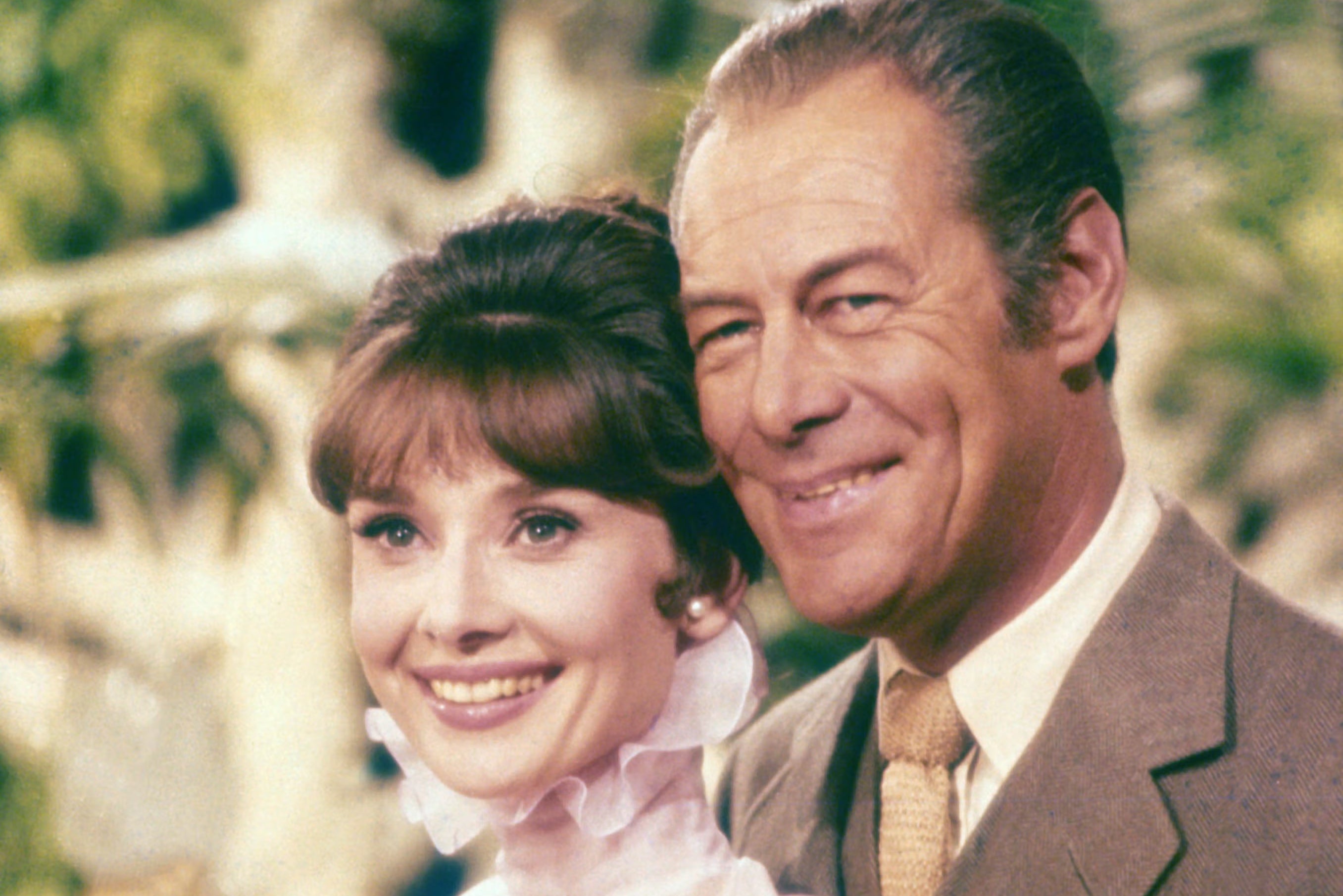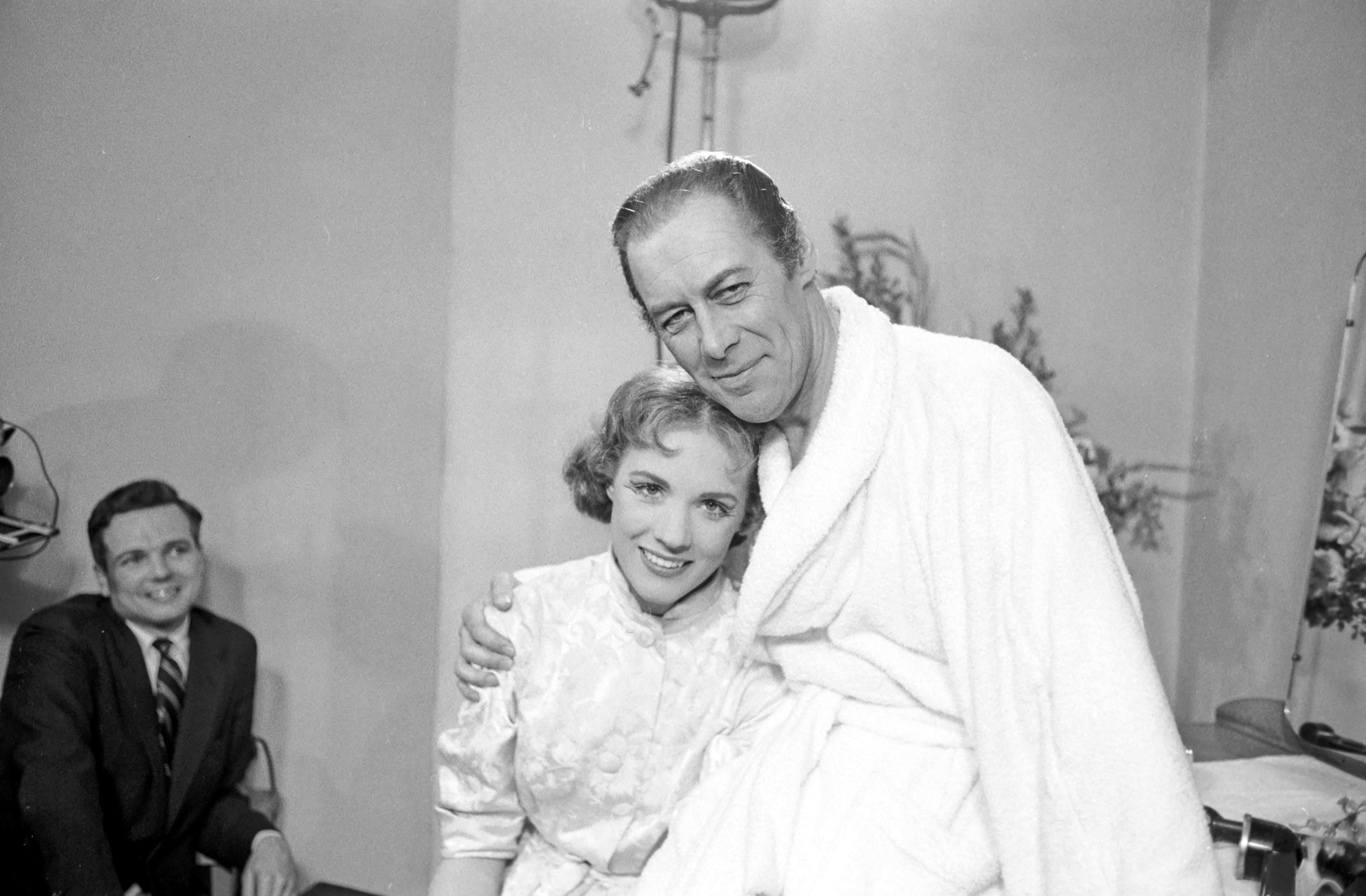My Fair Lady at 60: Creepy and chauvinistic or cosy and comforting?
The Audrey Hepburn classic has somehow avoided being caught up in today’s culture wars, writes Geoffrey Macnab. Six decades since its release, how do its themes stand up today – and what about the charge by some that it is ultimately a movie about men grooming young women?

The slippers still cause consternation.
At the end of George Cukor’s My Fair Lady (1964), when viewers might expect Professor Henry Higgins (Rex Harrison) to embrace the swan-like Eliza Doolittle (Audrey Hepburn), who he has apparently fallen for, he instead grunts, pulls his hat over his face, and snaps out: “Where the devil are my slippers?”
For 60 years, fans have been debating the scene. To some, it’s clear evidence of the film’s underlying chauvinism and prehistoric attitudes toward gender.
Eliza is the young ragamuffin, born in Lisson Grove and selling flowers somewhere near Tottenham Court Road. Higgins is the priggish elocution teacher. He takes her under his wing. Through his stern tutoring, she stops dropping her aitches and emerges from her shabby chrysalis as a beautiful, sophisticated and well-spoken woman of the world. She becomes a “lady”. He wins a bet.
That, in a nutshell, is the plot of the movie. But what’s the point of all that personal development, and wearing all those gorgeous Cecil Beaton costumes and hats when, in the end, all Eliza is going to do is fetch slippers and make cups of tea, for the curmudgeonly Higgins? Being his wife or lover would hardly be a liberation. She’d be freer back in the gutter.
From today’s perspective, My Fair Lady can appear a little creepy – a quintessential movie about men grooming women. This is hardly an unusual trope. Throughout Hollywood history, female characters have continually been made to behave in accordance with the attitudes and fantasies of older males. From Joan Fontaine’s nervous wife in Alfred Hitchcock’s Rebecca (1940) and Kim Novak in Hitchcock’s Vertigo (1958) to the computer-generated dream woman Kelly LeBrock in Weird Science (1985) and Rachael Leigh Cook as the would-be prom queen in the teen comedy She’s All That (1999), there are many examples of the trend.
And yet few seem really offended by My Fair Lady. To many, it’s one of those reassuring old films always on TV at Christmas, so full of hummable songs (“Wouldn’t It Be Loverly”, “The Rain in Spain”, “I Could Have Danced All Night”, etc) and chirpy cockneys with their thumbs in their braces, that you’d be considered a killjoy even to raise an eyebrow about its problematic sexual politics.

Strangely, the musical has a roughly similar premise to Yorgos Lanthimos’s Poor Things (2023), starring Emma Stone as the ingenue moulded by the scientist (Willem Dafoe). Unlike Poor Things, though, My Fair Lady isn’t full of sex and transgression – and it hasn’t provoked a ferocious debate about its feminist credentials or lack of them either. It is wholesome, mainstream fare: a big-budget extravaganza that recreates Edwardian London, including ballrooms and Ascot Racecourse, in a lavish, ingenious but highly stylised fashion.
That is surely one of its enduring fascinations. The film still has a U certificate. Few question whether there is anything innately disturbing about Higgins experimenting in such cruel and pernickety fashion on the vowels of a young working-class woman he picks up from the streets.
The movie was an adaptation of the 1956 Lerner and Loewe Broadway hit. This in turn was based on the 1938 British film Pygmalion, starring Leslie Howard and Wendy Hiller (who shocked audiences with the line “not bloody likely” at a time when hardly a hint of swearing had been heard on screen). The film was adapted by Nobel Prize-winning writer George Bernard Shaw from his own 1913 play. (He won an Oscar for his screenplay.)
Shaw had been inspired by the Greek myth of the sculptor falling in love with the statue he has carved. However, as his biographer Michael Holroyd notes, he really regarded his original play as “an experiment to demonstrate how the science of phonetics could pull apart an antiquated class system”.
The writer famously contended that it was “impossible for an Englishman to open his mouth without making some other Englishman despise him”, but any sense of class warfare in My Fair Lady is very muted indeed. Everyone from Stanley Holloway’s lovable chancer Alfred Doolittle to Jeremy Brett’s drippy aristocrat Freddy is a caricature.
The main scandal that still clings to the film surrounds the casting. The decision to bump Julie Andrews from the role she had played so successfully on Broadway continues to rankle with the actor’s fans.
Why was Andrews overlooked? This was a hugely expensive movie costing a reported $17m (equivalent to more than $125m today), and studio boss Jack Warner didn’t want to take a risk on a newcomer. The elfin Hepburn, at the height of her fame after Breakfast at Tiffany’s (1961), Funny Face (1957) and Sabrina (1954), seemed a far safer bet, and he paid $1m to secure her services.

After being discarded in such brutal fashion, Andrews made her debut instead in Disney’s Mary Poppins – and promptly won an Oscar. She also secured a Golden Globe, cheekily thanking Warner in her acceptance speech “for making all this possible in the first place”. If it hadn’t been for the studio boss rejecting her as Eliza, she wouldn’t have been administering all those spoonfuls of sugar or singing “Supercalifragilisticexpialidocious” as Poppins.
Hepburn was the one seemingly humiliated. Her singing wasn’t considered up to scratch. To her dismay, she was dubbed by celebrated “ghost singer” Marni Nixon, also the voice of Maria in West Side Story. Then, to rub in the indignity even further, her performance as Eliza wasn’t deemed worthy of even an Oscar nomination. It was as if Academy voters felt she had delivered only half a performance.
The irony was obvious. This was an uplifting story about a woman finding a voice, but Hepburn had hers stolen away. She may have been paid almost five times as much as her irascible male co-star Rex Harrison (who received only a little over $200,000), but he got the Oscar – and he couldn’t sing at all. Harrison refused to be dubbed, spoke his way through his songs and insisted on performing them “live”.
As director Cukor’s biographer Patrick McGilligan noted, Harrison was fitted with “a shortwave radio microphone so he could tear through his songs without stopping for sound adjustments”. Movie lore has it that this microphone would often pick up messages from police broadcasts.
When Harrison had played Higgins on stage, he had tried to get Julie Andrews fired, first because he didn’t think she was good enough (“if this b**** is here on Monday I am quitting the show”), and then because he worried she might eclipse him. He wasn’t much more sympathetic to Hepburn. Nonetheless, he showed an unexpected grace when he was presented with his Oscar by Hepburn (who had flown in from Europe for the ceremony despite her own lack of a nomination). It’s fascinating to watch footage of the awards. Whoever was directing the broadcast can’t resist from cutting at every opportunity between Hepburn on stage and Andrews sitting in the audience. “I feel in a way I should split it in half,” Harrison gestures toward Hepburn when he finally has the Oscar in his hands.
Looking back now, it is indeed bizarre that Hepburn’s brilliance wasn’t more widely acknowledged. She may not have done her own singing but she is still the film’s cynosure. Her cockney accent wavers at times but she has a gamine-like appeal as the flower seller in the early scenes, while showing poise and glamour once she is introduced to high society.
“Eliza Doolittle is supposed to be ill at ease in European ballrooms, but bloody Audrey has never spent a day in her life out of European ballrooms,” Harrison is said to have remarked of his co-star – an observation that makes no acknowledgement of Hepburn’s comic brilliance. She’s a superb comedian whose face in scenes when she is being ignored by Higgins and Colonel Pickering (Wilfrid Hyde-White) is almost as expressive as that of Chaplin.
Harrison the actor is still often conflated with Higgins the character. Stories are endlessly recycled about what “an appalling human being he was” and how badly he treated his colleagues. These seem vastly exaggerated. In the Oscar footage, Hepburn is completely at ease in his presence. He no doubt had his ogre-like moments behind the scenes, but audiences would never have warmed to him in the way they did if that charm he so often showed on screen wasn’t at least partly authentic.
As for My Fair Lady itself, the film has somehow avoided being caught up in today’s culture wars. It is still shown widely, while the musical is frequently revived. Trevor Nunn’s 2001 stage version in London, starring Martine McCutcheon, received rapturous reviews, as did the 2018 Broadway production starring Lauren Ambrose. Its continuing currency is a testament both to the source material and its ambiguity. Shaw himself was fiercely resistant to the idea of “a love affair between the middle-aged, middle-class professor, a confirmed old bachelor with a mother fixation, and a flower girl of 18”. After Pygmalion was released, he gave an interview in which he claimed his script “emphasised the escape of Eliza from the tyranny of Higgins by a quite natural love affair with Freddy”.
However, the producer went behind his back, hiring other screenwriters “who added a ‘sugar-sweet ending’ which Shaw found out about for the first time at a press show two days before its premiere” according to Holroyd.
Both Pygmalion and My Fair Lady strongly hint at a sexual, perhaps even sadomasochistic, attraction between Higgins and Eliza, and suggest the duo are drawing inexorably closer together. However, they’re also deliberately open-ended. Their final scenes may have Higgins calling for his slippers, but that certainly doesn’t mean Eliza is going to collect them for him.
‘My Fair Lady’ is available on Prime Video






Join our commenting forum
Join thought-provoking conversations, follow other Independent readers and see their replies
Comments